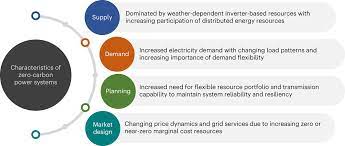The energy landscape is undergoing a significant transformation driven by the urgent need to address climate change and transition to more sustainable and eco-friendly energy sources. Renewable energy solutions, such as solar, wind, hydropower, and geothermal energy, are at the forefront of this revolution. In this article, we will explore how these renewable energy sources are redefining the traditional gas/electricity mix and reshaping the future of energy production.
The Rise of Renewable Energy
Renewable energy sources, also known as green or clean energy, have gained momentum in recent years due to their numerous advantages:
- Environmental Benefits: Unlike fossil fuels, renewable energy sources produce little to no greenhouse gas emissions. This makes them a critical component of efforts to mitigate climate change and reduce air pollution.
- Sustainability: Renewable energy is derived from sources that are naturally replenished, such as sunlight, wind, and flowing water. This ensures a consistent and long-term energy supply.
- Energy Independence: By harnessing local, renewable resources, countries can reduce their dependence on fossil fuel imports and enhance energy security.
- Economic Opportunities: The renewable energy sector has created jobs and investment opportunities. It is a catalyst for economic growth, especially in rural areas where wind farms, solar installations, and hydropower facilities are developed.
Solar Power: A Game Changer
Solar energy is one of the most transformative renewable energy sources, and its growth has been exponential. Here’s how it’s making a difference:
- Solar Panels: Photovoltaic (PV) solar panels capture sunlight and convert it into electricity. The cost of solar panels has plummeted in recent years, making solar power increasingly affordable.
- Grid Integration: Solar power can be integrated into the electricity grid, both at a utility-scale and in distributed installations on rooftops. This flexibility enables a seamless transition to solar energy.
- Storage Solutions: Energy storage technologies, such as lithium-ion batteries, are enhancing the reliability of solar power by storing excess energy for use during cloudy or nighttime periods.
Wind Energy: A Clean Powerhouse
Wind energy is another dominant player in the renewable energy sector, with its own set of advantages:
- Wind Turbines: Large wind turbines harness the kinetic energy of the wind to generate electricity. These turbines can be installed on land or offshore, offering versatile placement options.
- Low Operating Costs: Once wind turbines are installed, the operational and maintenance costs are relatively low. Wind farms can provide a consistent source of electricity for decades.
- Global Expansion: Wind energy is growing rapidly on a global scale. In countries with favorable wind conditions, it is becoming a primary source of electricity.
Hydropower and Geothermal Energy
Hydropower and geothermal energy are established renewable energy sources with their unique contributions:
- Hydropower: Dams and water turbines convert the energy of flowing water into electricity. Despite environmental considerations, hydropower remains a reliable and sustainable energy source.
- Geothermal Energy: Geothermal power plants use the Earth’s heat to produce electricity. They are highly reliable, producing consistent power without emissions.
Redefining the Gas/Electricity Mix
As renewable energy solutions continue to expand, they are redefining the traditional gas/electricity mix in several ways:
- Reduced Fossil Fuel Dependence: The increased use of renewable energy sources decreases dependence on fossil fuels for electricity generation.
- Lower Emissions: A greater proportion of clean energy in the mix leads to reduced greenhouse gas emissions and improved air quality.
- Enhanced Grid Resilience: The integration of renewables, coupled with advanced energy storage technologies, strengthens the electricity grid’s resilience and reliability.
- Energy Transition: The transition from gas to renewables is a pivotal step toward achieving a more sustainable and eco-friendly energy system.
Conclusion
Renewable energy solutions, including solar, wind, hydropower, and geothermal energy, are revolutionizing the gas/electricity mix and redefining the future of energy production. They offer a path to combat climate change, reduce emissions, and enhance energy security. As these clean energy sources continue to advance, they will play a pivotal role in shaping a more sustainable and resilient energy landscape. The transition to renewable energy is not merely a choice but an imperative in the quest for a greener and more sustainable future.
